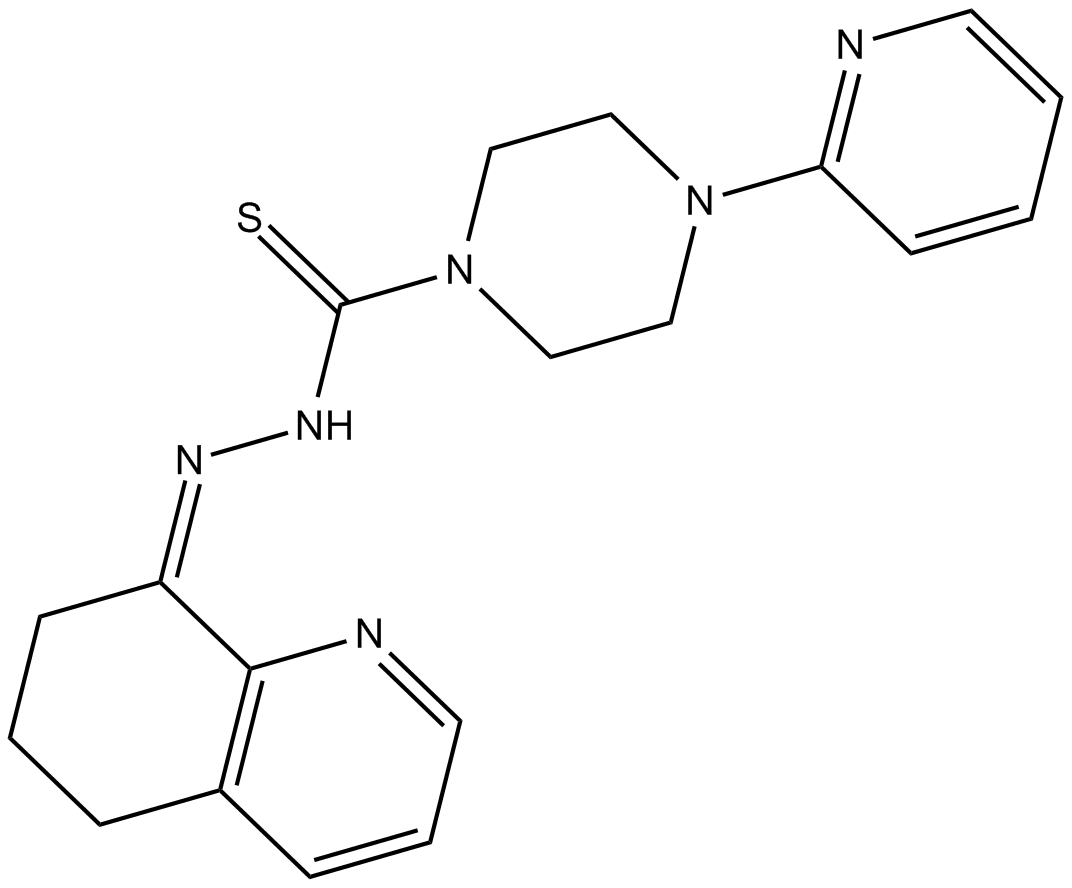COTI-2 |
| Catalog No.GC15225 |
activates mutant forms of p53
Products are for research use only. Not for human use. We do not sell to patients.

Cas No.: 1039455-84-9
Sample solution is provided at 25 µL, 10mM.
COTI-2 activates mutant forms of p53.
p53 has varoius mechanisms of anticancer function and plays a critical role in genomic stability, apoptosis and inhibition of angiogenesis.
In vitro: Previous study tested the efficacy of COTI-2 against a diverse group of human cancer cell lines with different genetic mutation backgrounds. Results showed that COTI-2 efficiently inhibited the proliferation rate of all the tested cell lines following 72 h of treatment. Most cell lines showed nanomolar sensitivity to COTI-2 treatment. In addition, COTI-2 was significantly more effective at inhibiting tumor cell proliferation than either cetuximab or erlotinib in COLO-205, HCT-15, and SW620 cell lines. Notably, all three lines were insensitive to growth inhibition to any degree in response to low concentrations of cetuximab and erlotinib, but highly sensitive to even low doses of COTI-2 [1].
In vivo: The effects of COTI-2 on inhibiting the growth of HT-29 and SHP-77 xenografts in immunocompromised mice was assessed when intraperitoneally administered. It was found that COTI-2 at 10 mg/kg could significantly inhibit tumor growth in the HT-29 human colorectal tumor xenografts. In addition to reducing tumor volumes at specific times post-treatment, COTI-2 could also delay the time required for tumors to reach specified volumes [1].
Clinical trial: A study of COTI-2 for the treatment of advanced or recurrent gynecologic malignancies is currently recruiting patients [2].
References:
[1] Salim, K. Y.,Vareki, S.M.,Danter, W.R., et al. COTI-2, a novel small molecule that is active against multiple human cancer cell lines in vitro and in vivo. Oncotarget 7(27), (2016).
[2] https://clinicaltrials. gov/ct2/show/NCT02433626term=COTI-2&rank=1
Average Rating: 5 (Based on Reviews and 36 reference(s) in Google Scholar.)
GLPBIO products are for RESEARCH USE ONLY. Please make sure your review or question is research based.
Required fields are marked with *




















